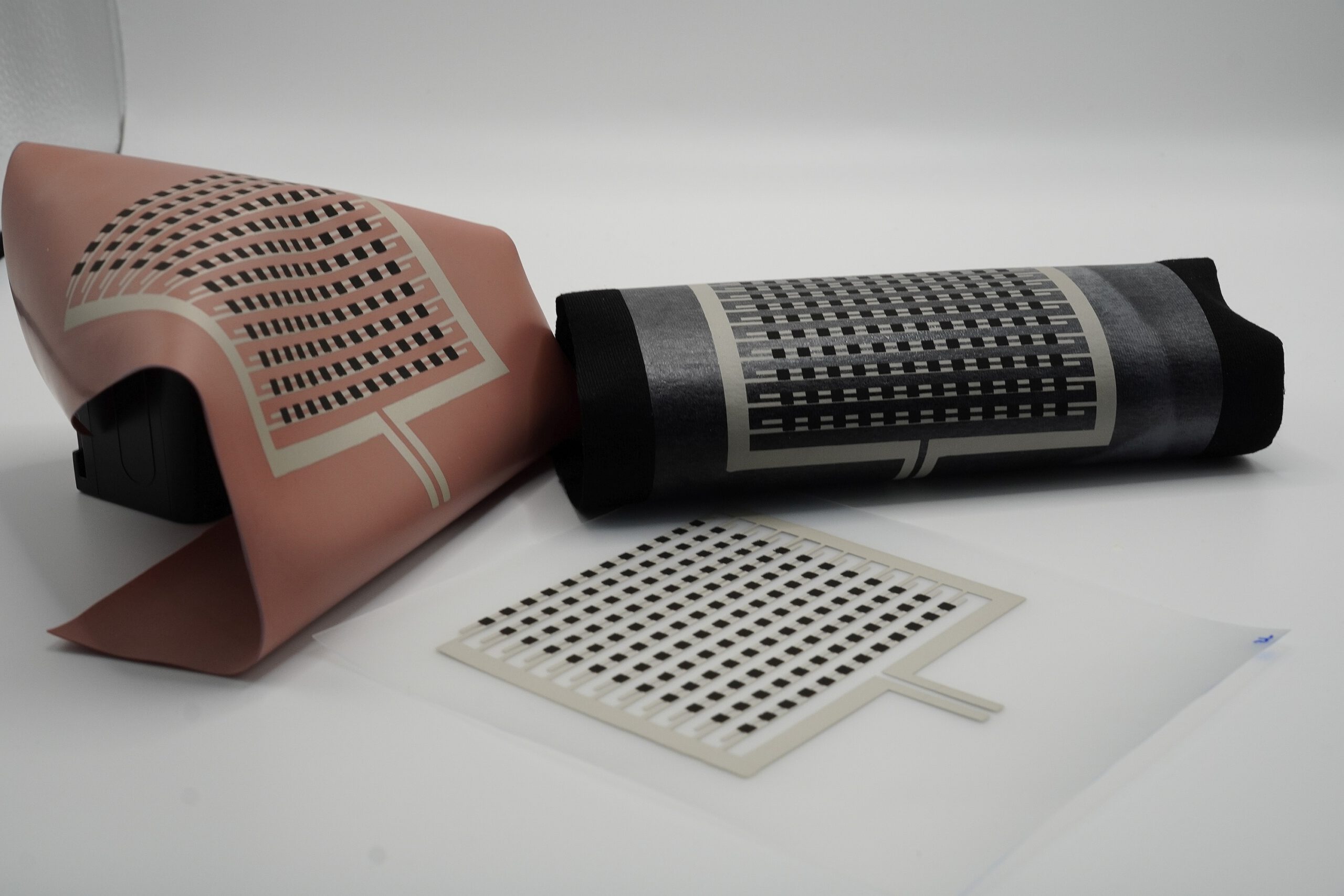Printed electronics are a real all-rounder. It adapts to uneven surfaces, follows every bend, can be applied to a wide variety of materials and is also cost-effective to produce. Without them and the inks used for printing, many high-tech applications would not be possible. At LOPEC in Munich from 26 to 27 February, the INM – Leibniz Institute for New Materials will be presenting functional inks and coatings that have tailor-made properties for special applications.
Saarbrücken/Germany, February 24, 2025 A few years ago, negative values were printed on electronically conductive plates in a very complex process and these were then reduced to the required conductor paths in an etching bath. The electronic components were then assembled. However, the circuit had to be designed before it could be etched. This first step in the development process is inevitably retained. Apart from that, the entire complex and sometimes health-threatening value creation process has now been simplified. Electronics are becoming ever smaller and more closely meshed, new materials and a wide variety of components within the value chain not only make the whole thing more efficient. Conductivity, flexibility, stretchability or recyclability are just some of the requirements that are placed on printed electronics, depending on the area of application. Depending on which function is to take centre stage, the inks used must have special properties. Researchers at the INM have therefore developed special inks with specific functionalities. Depending on requirements, they are particularly stretchable, heatable or temperature-sensitive.
An ink variant of INM was developed for energy-saving, self-regulating heating systems. With its carbon-based composition, it is ideal for heatable wearables, battery heaters, smart building applications and applications in the automotive industry. A second variant is temperature-sensitive thanks to hybrid conductive fillers and polyurethane materials. It is perfect for industrial sensors as it offers stable performance in detecting and monitoring temperatures under different environmental conditions. Another variant impresses with its excellent conductivity and high reliability under mechanical stress. It is screen printable and is ideal for applications that require flexible or stretchable conductive materials. The elastic ink has already been tested and successfully validated in industrial practice. Other ink solutions with specific functionalities are also possible, including a particularly sustainable ink that is easy to recycle and reuse.
LOPEC is the world’s leading trade fair for printed electronics. It takes place annually in Munich and brings together industry experts from science and industry. The INM will be presenting its innovations at stand B0.610. In addition to functional inks, the Saarbrücken-based materials research institute will be presenting innovations in the fields of functional surfaces with customised haptics, transparent heating structures and satellite communication components.
Image source
INM, Lars Knaack, Printed heating elements based on INM inks. The structures are printed on rubber, textiles and standard substrates.


